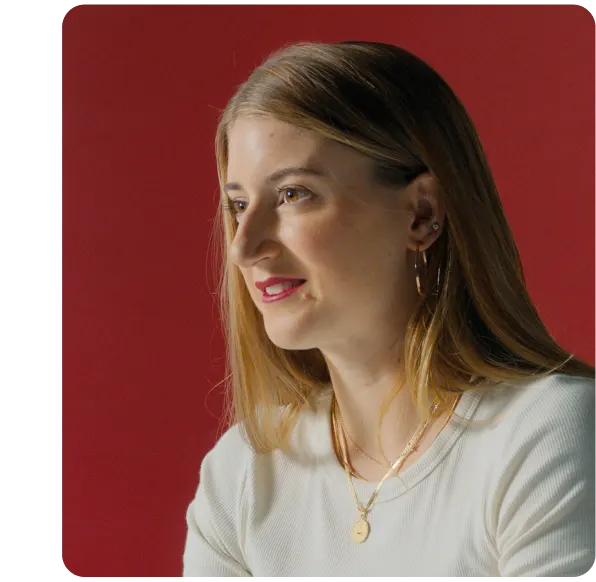

Authenticate accounts
Challenge
Public needed a way to help users connect their bank accounts and invest without increasing the risk of fraud.
Solution
Public created a safe, easy onboarding experience that enables users to trade more quickly.
Invest in everything
The American stock market remains one of the greatest sources of wealth creation in human history. But with 10% of Americans owning 89% of all stocks and mutual fund shares, it’s also one of the greatest drivers of inequality.
Enter Public, an investing platform that allows everyday investors to build a modern portfolio of stocks, ETFs, crypto, and alternative assets, all in one place. Public also helps people become better investors by giving them access to custom company metrics, live shows about the markets, and insights from a community of millions of investors, creators, and analysts.
In order to gain market share among the 31% of users already leveraging investments apps, along with the growing population of earners who have yet to make their first investment, Public needed a way to demystify the onboarding experience and make it easy for users to get up and running on their platform—all while minimizing risk.
That’s when they turned to Plaid.
of investment app users prioritize instant access
have given up because of an overly complex sign-up process
of Public users end up diversifying their investments after sign-up
A trusted experience
Today’s consumers are more likely to trust a platform when they feel like their needs for trust and safety are being met. But for too many investment channels, that often comes at the expense of the user experience.
“By partnering with Plaid, we’re able to build trust and security directly into our experience,” says MaryAlexa Divver, Head of Product, Infrastructure & Assets.
For Public, the ability for users to get up and running quickly makes the entire investing experience more accessible—as a lag between sign-up and that first investment can slow down momentum.
With Plaid, Public users can quickly connect and authenticate their bank accounts rather than wait the standard three to five days it takes to manually authenticate an account via micro-deposits. And because one in four Americans have used Plaid to connect their bank accounts via Plaid, millions of users are already familiar with the Plaid onboarding experience. For Public, that familiarity is a key motivating factor both for their business and their users.
“By having that [Plaid] presence, you get this innate trust and security built in. It makes the decision to complete the sign-up process and make those first investments that much easier."
MaryAlexa Divver, Head of Product, Infrastructure & Assets
A safer ecosystem
The shift to digital finance is happening at an increasingly fast pace. In a few short years, it’s possible that fintech-powered apps and embedded services will become the primary way people complete the majority of their financial tasks. But in order for that to become reality, fintech companies need to build experiences that are both simple and secure.
That’s why security was top of mind when Public rolled out a new feature allowing investors to add more than one payment method to their platform. For members, this has the potential to improve the investing experience by providing the ability to choose their preferred payment method. But if implemented wrong, it could also introduce additional risk.
Without a good way to verify that both payment methods linked to an account belong to the same person, a bad actor could use the feature to move another investor’s money into their own account.
To prevent that from happening, Public uses Plaid to check newly added payment methods against the user’s identity data, ensuring they catch fraud attempts before customers face any real risk. The result is an easy way for users to move money between accounts and investments as needed, without increasing their risk of fraud.
How it works
More lifetime value
Of course, Public doesn’t only want to drive sign-ups to the platform; they want to encourage long-term user engagement, as well. That’s why they provide educational content and features to help users become better investors over time. The result is two-fold, helping both empower retail investment and improve the lifetime value of their customers.
To further support their mission of supporting long-term investors, Public also relies on Plaid. The latter enables them to offer easy ACH (automated clearing house) transfers for users, ensuring smooth investing and account funding. Plaid even helps the platform alert investors when their account balance won’t cover the amount they want to transfer, reducing the headaches of overdraft fees.
All of which contributes to investors having the kind of positive experience that keeps them coming back to invest more: Company data shows that around 75% of consumers who join the platform on the back of short-term trends like meme stocks stick around and diversify.
“Our mission is to help people be better investors. Plaid helps us do that by letting us build efficiently and quickly, ultimately letting us worry about our investors and put them first.”
MaryAlexa Divver, Head of Product, Infrastructure & Assets
Investing for all
The world of investing is changing fast and consumers are looking for ways to navigate it on their own terms.
By recently acquiring Otis, a pioneer in fractional investing in NFTs, art, and collectibles, Public has become the only place in the world where people can invest and build a modern portfolio with any fractional asset. Who says a pair of sneakers or a rare comic book can’t be as smart of an investment as a traditional stock? Public puts that choice in the hands of consumers.